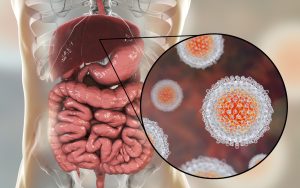Haemophilus influenzae is caused by Haemophilus influenzae. It belongs to the so-called conditionally pathogenic microbes, that is, in a healthy state it lives on the mucous membranes of the respiratory tract, but does not cause disease. But as soon as the child’s body finds itself in unfavorable conditions, its defenses decrease, the child can get sick. Approximately 70% of children under the age of 5 are carriers of Haemophilus influenzae.

In recent years, there has been a constant increase in morbidity, children under 4 years of age, including newborns, are especially often ill. This is because Haemophilus influenzae is highly variable and rapidly becomes resistant to antibiotics.
The development of the disease is facilitated by respiratory viruses, therefore, the danger increases during an influenza epidemic, during a period of massive incidence of ARVI. As a result of the activation of the hemophilic bacillus, angina, bronchitis, sinusitis, otitis media, pneumonia most often occur, which do not respond well to conventional treatment and often turn into a chronic form. Infection is possible already in the form of meningitis, meningoencephalitis, after recovery from which residual effects often remain in the form of hearing impairment, speech, decreased intelligence, paralysis.
A particularly dangerous disease caused by Haemophilus influenzae is epiglottitis. This is acute inflammation and swelling of the epiglottis, which covers the larynx when food or liquid is swallowed to prevent it from entering the airways. Usually children from 2 to 8 years old are ill. The disease can progress rapidly and completely block the airways within 2-5 hours. Epiglottitis requires emergency measures, hospitalization, and antibiotic treatment. Unrecognized and untreated epiglottitis leads to death in 8-12% of cases.
Vaccination can help protect your child from infection. Hemophilus influenza vaccination is recommended by the World Health Association and is included in the vaccination schedules of 38 countries. In our country, it is not included in the mandatory vaccination calendar.
You can start vaccination from 3 months of age, with an interval of 1.5 months, 3 times, simultaneously with routine vaccinations against diphtheria, tetanus and poliomyelitis.
At the beginning of vaccination https://en.wikipedia.org/wiki/Vaccination at the age of 6-12 months – the vaccination is done twice with an interval of 1-2 months. Immunity is developed 14 days after the introduction of the 2nd dose of the drug.
Revaccination is carried out 12 months after the last injection, then stable immunity is developed for 3-4 years.
To protect a child aged 1-5 years, a single injection of the drug is sufficient.